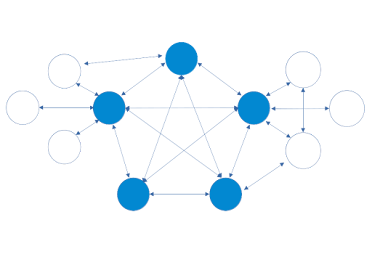CryptoDbSS / Ethereum - Bridge interoperability

a strong scability point is interoperability, How a software can work with another to increase its functionalities and users, CryptoDbSS has worked hard on this aspect, that is why Ethereum and its great ecosystem have been kept in view, one of the most notable is the implementation of its own EVM and smart contracts, these allow users to program decentralized applications within their blockchain, and a lot of unimaginable things, this article will demonstrate the implementation of these through the use of CryptoDbSS own software together with Ethereum, achieving interoperability between the two. This package is divided into 3 essential modules, the user layer that interacts with the bridge's dapp The Ethereum vendor Smart Contract the bridge-core engine Starting from the top, The User Layer . For a user to be able to use the app, it is necessary to provide a graphical interface, This is served via HTTP, and uses Web3.js to be able to integrate with...



